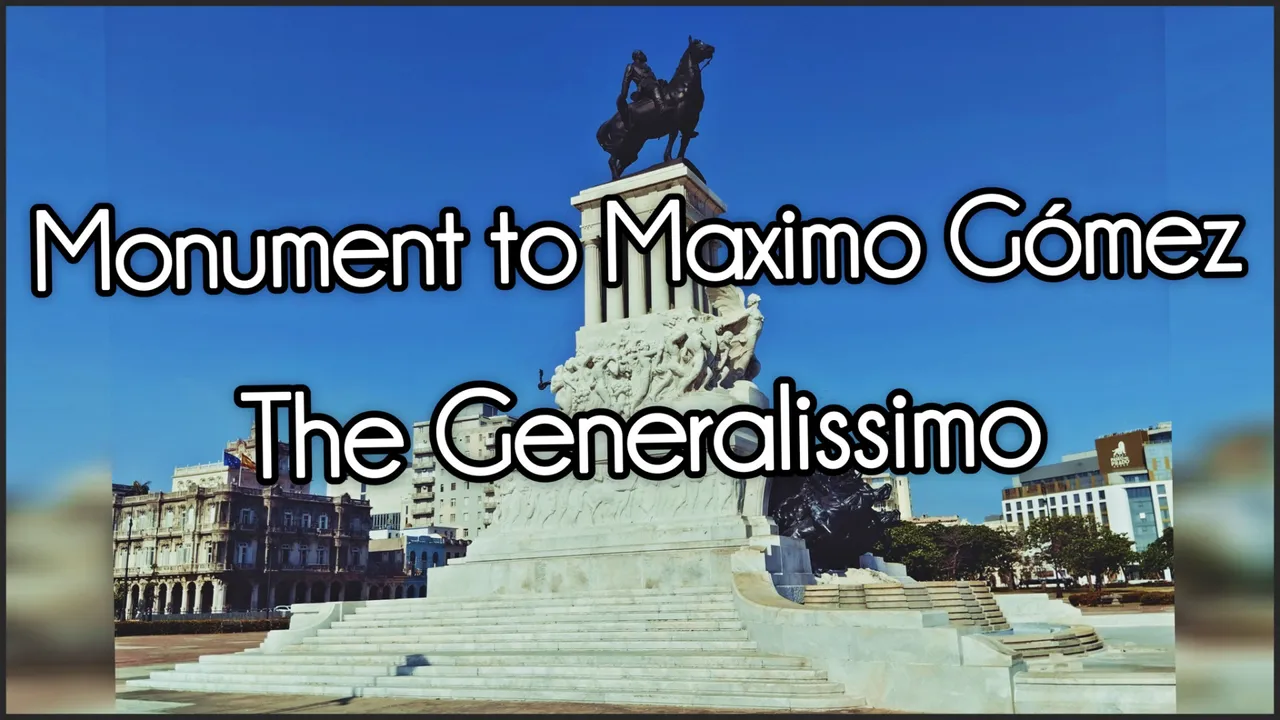
English versión
As I write this publication, a small fragment of a Cuban song comes to mind that speaks of the way in which heroes are remembered: ‘Heroes are remembered without tears...’. And what better way to keep their memory alive than by erecting a monument in their honour, a sculpture that reminds us of the greatness of their deeds and the immense value of their actions.
In today's post I am going to write about the Monument to Máximo Gómez Báez, which is located in Havana, next to the Avenida del Puerto, opposite the Malecón. It is a large sculptural ensemble that pays tribute to one of the greatest military leaders of the wars for Cuban independence, a brilliant strategist, and a leading figure in the two wars for Cuba's independence from Spanish colonialism.
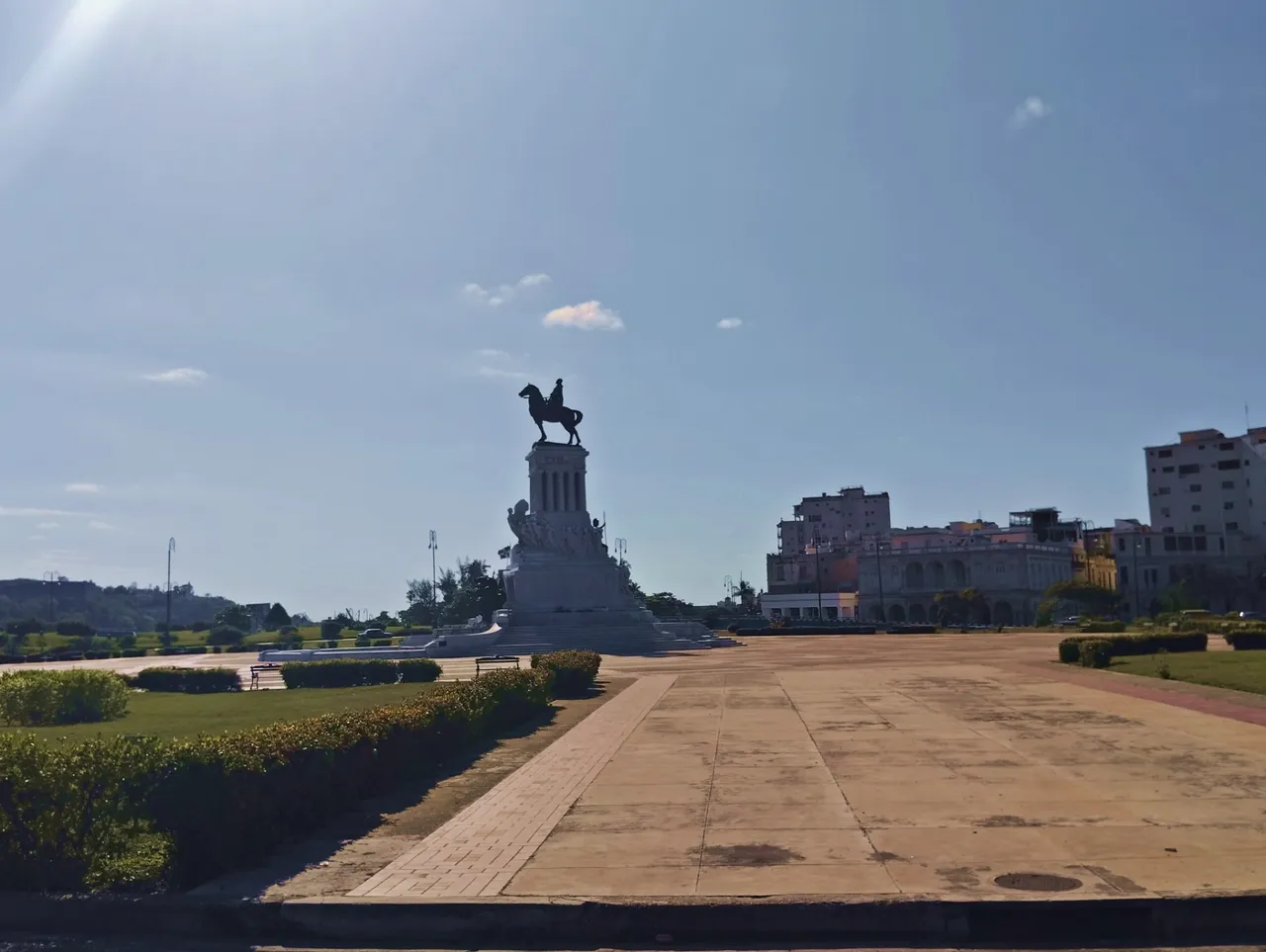
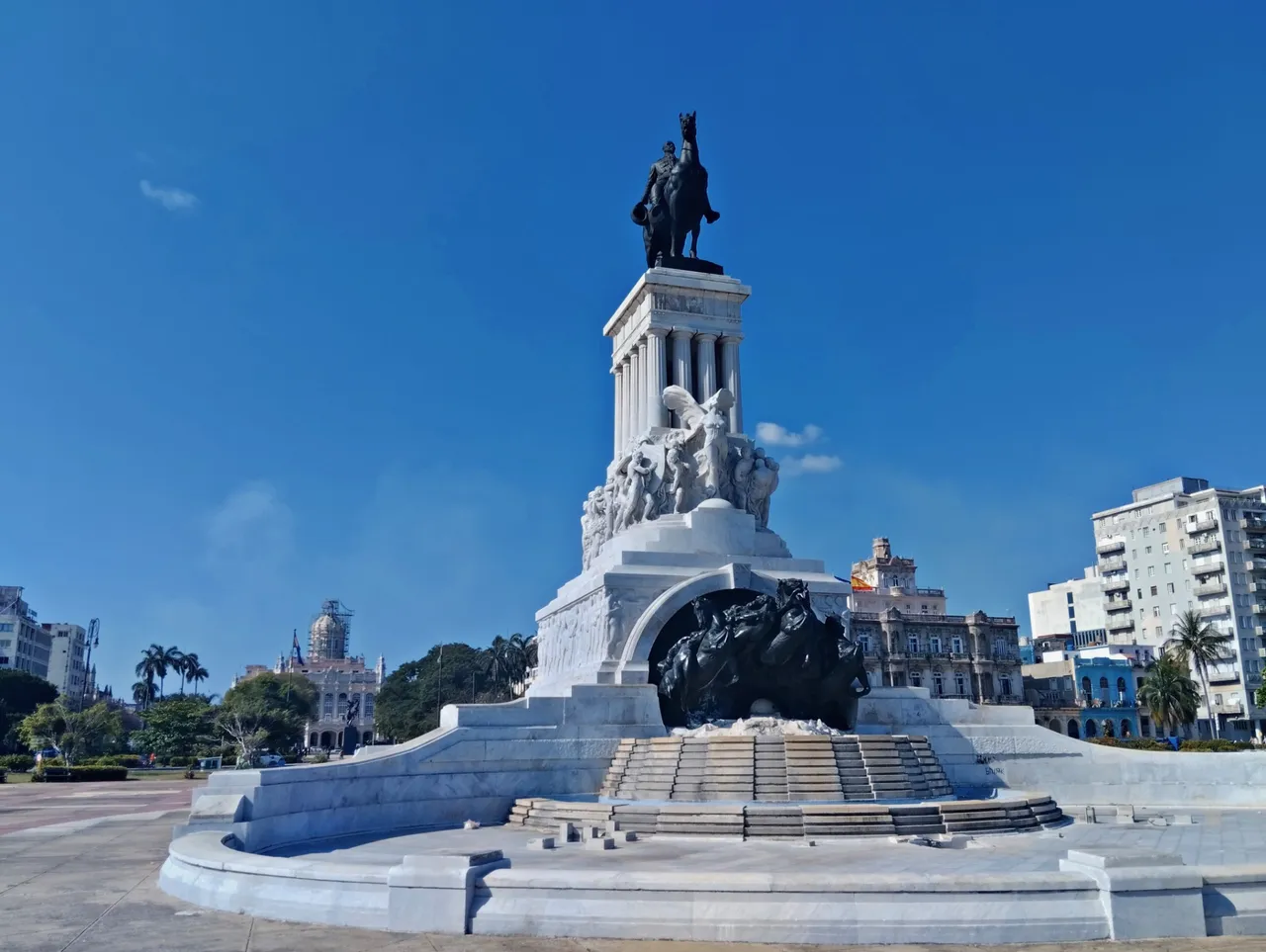
The main piece of the monument is the bronze equestrian statue where the General appears on his horse, as one who is still on a war footing ready to gallop off with the first bugle signal announcing the dreaded machete charge. The expression on his face conveys determination and leadership, reminding us of the courage with which he led the Cuban troops.
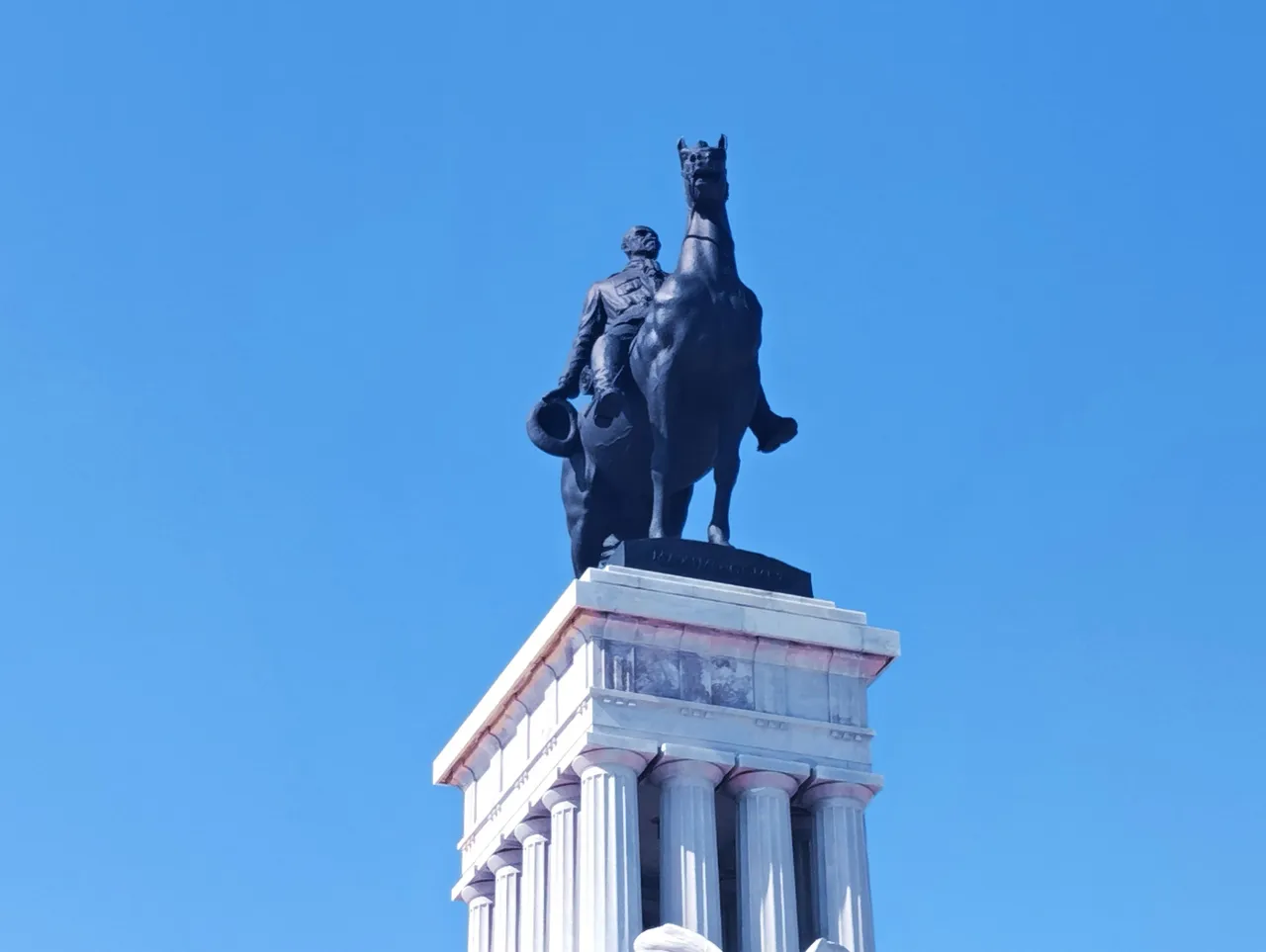
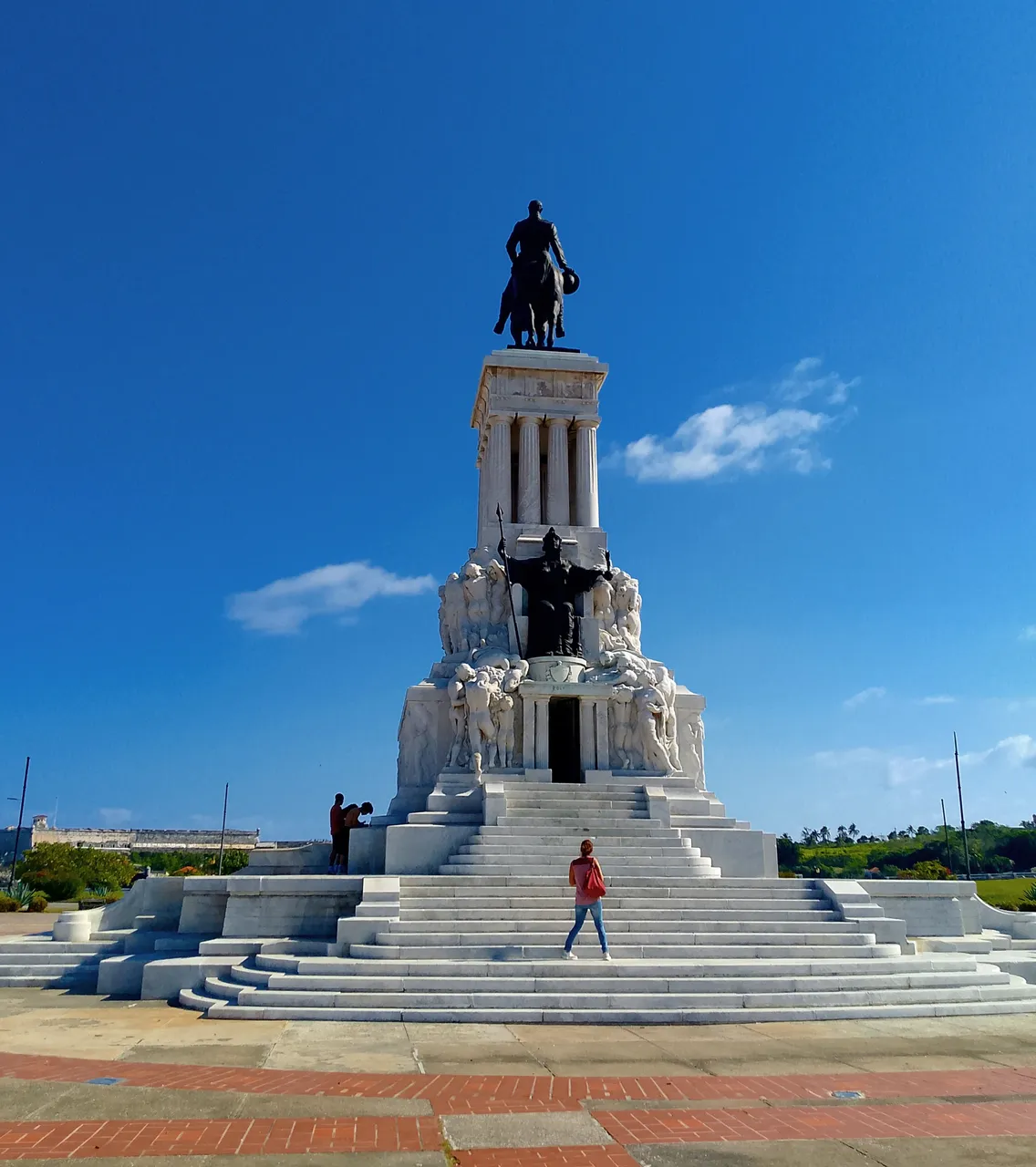
The front of the statue faces the sea, a reference to his foreign origin as General Máximo Gómez was of Dominican nationality. However, Cuba was his home, he was a much loved and admired figure. He dedicated his best years to Cuba, raised his family, and died on Cuban soil. At the end of his life, he was bid farewell with deep respect and admiration by the Cuban people. His mortal remains rest in Cuba, the land he defended and loved.
The monument stands on a large stepped base that includes ramps and a fountain that is currently in disuse, it is formed by three ascending levels, decorated with beautiful high and low reliefs that tell historical passages of our struggles.

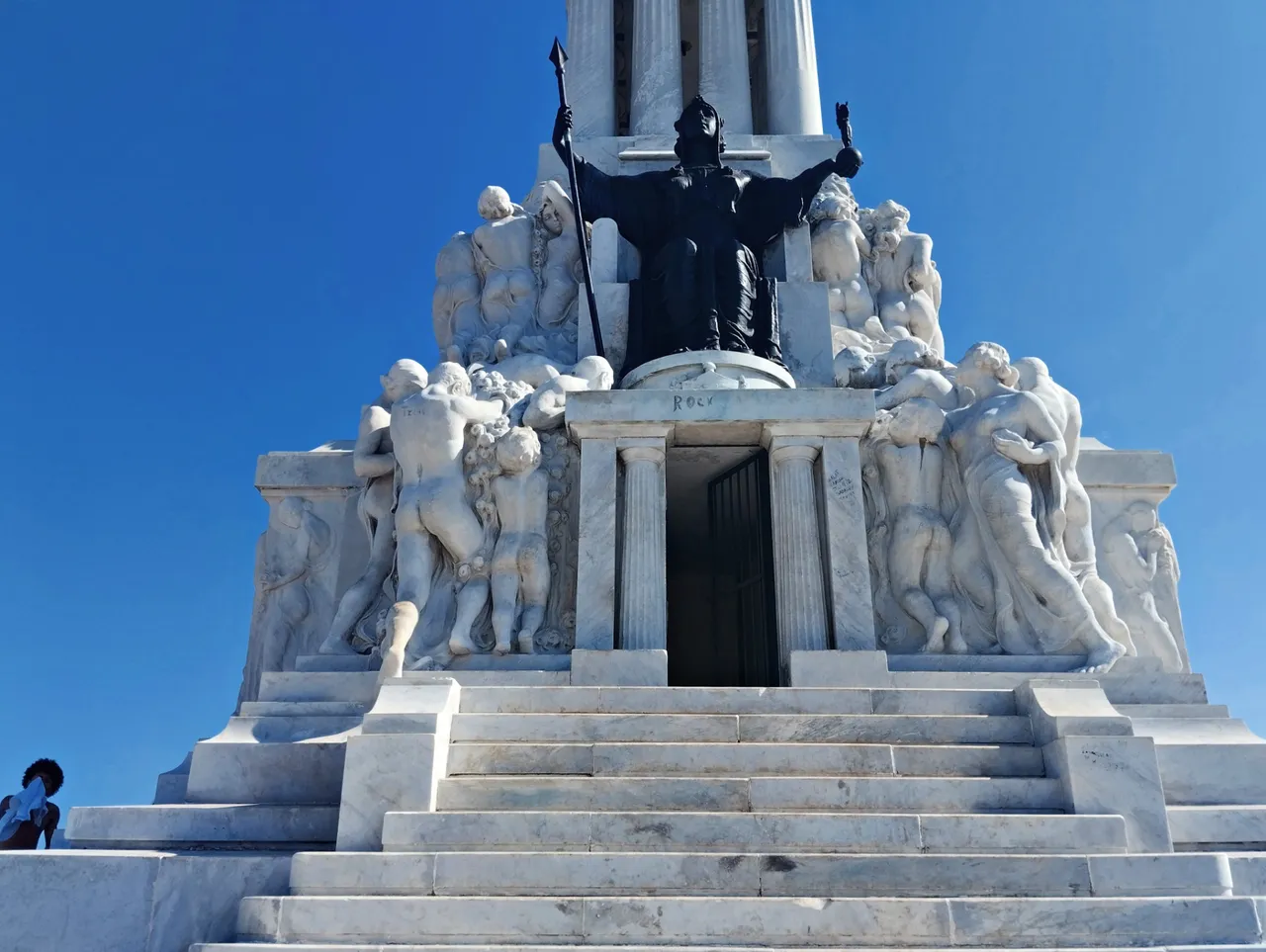
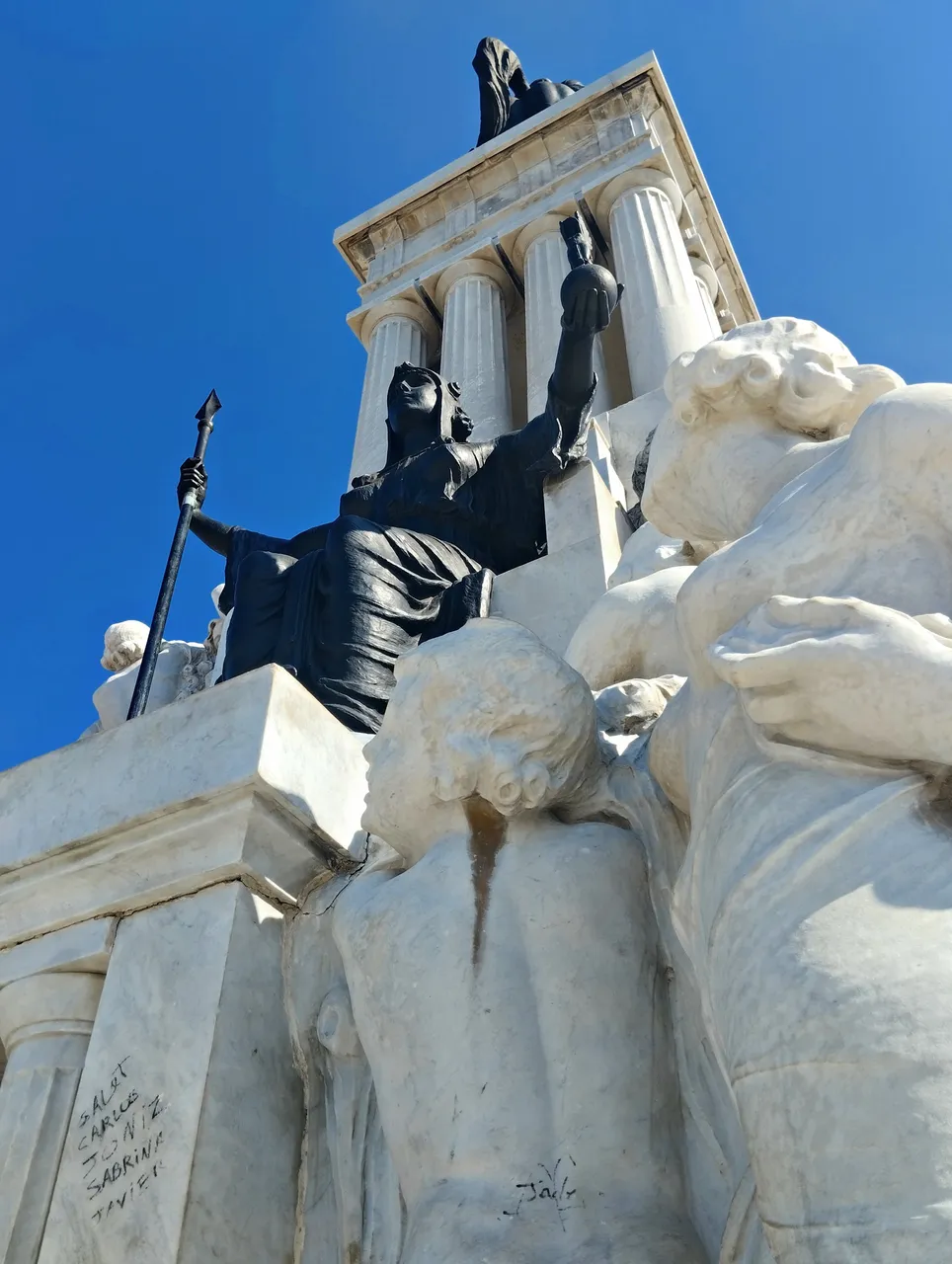
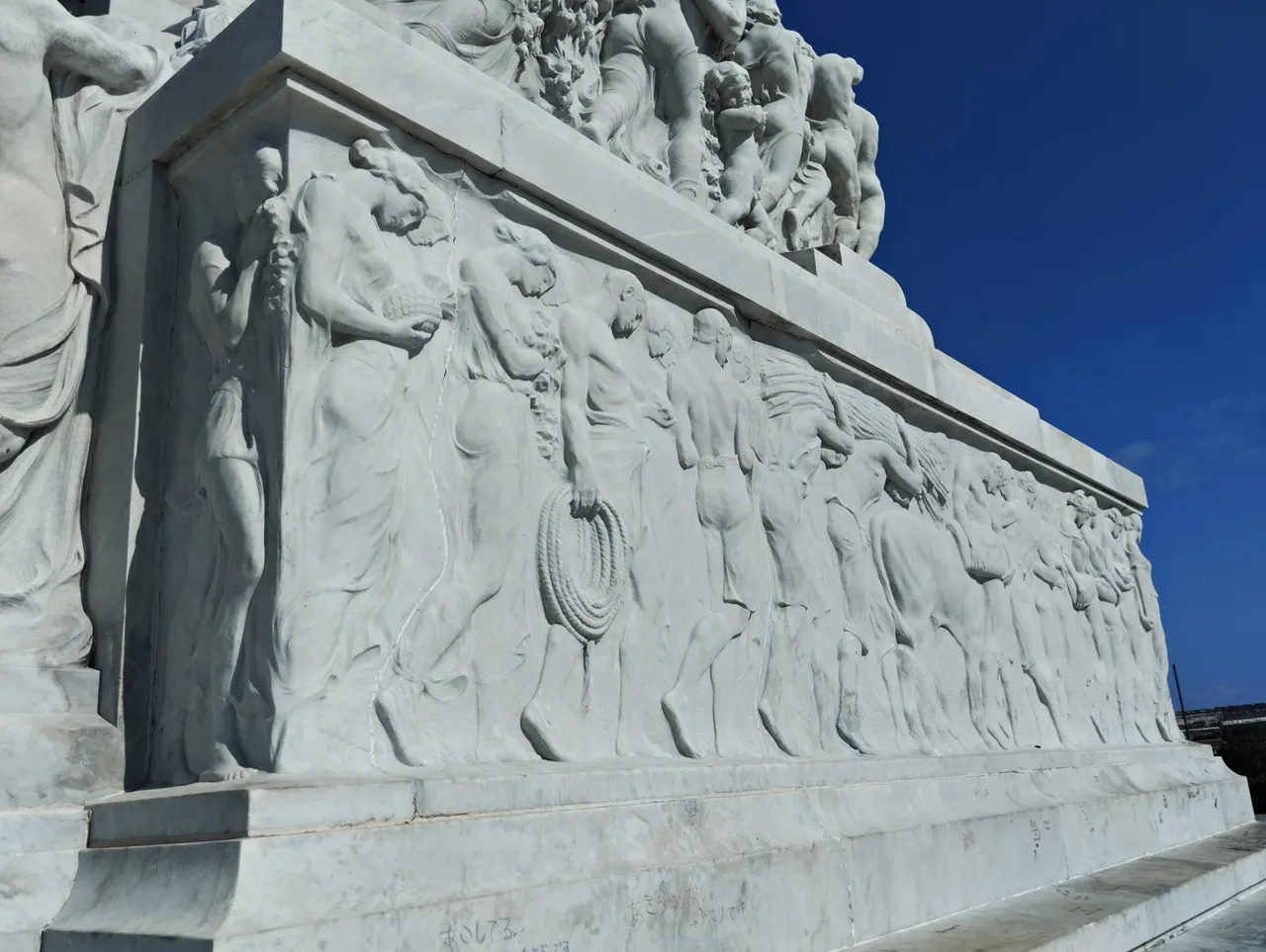
But the most impressive for me was the main face of the ensemble, where there is a group of horses cast in bronze that seem to emerge from a niche in the wall, galloping at full gallop, conveying energy and a sense of movement. In this whirlwind of unbridled horses can also be seen some naked bodies of women in what seems to me to be an allegory of the freedom for which the Generalissimo offered his best years and knowledge to the insurrectionist troops and the Cuban cause.
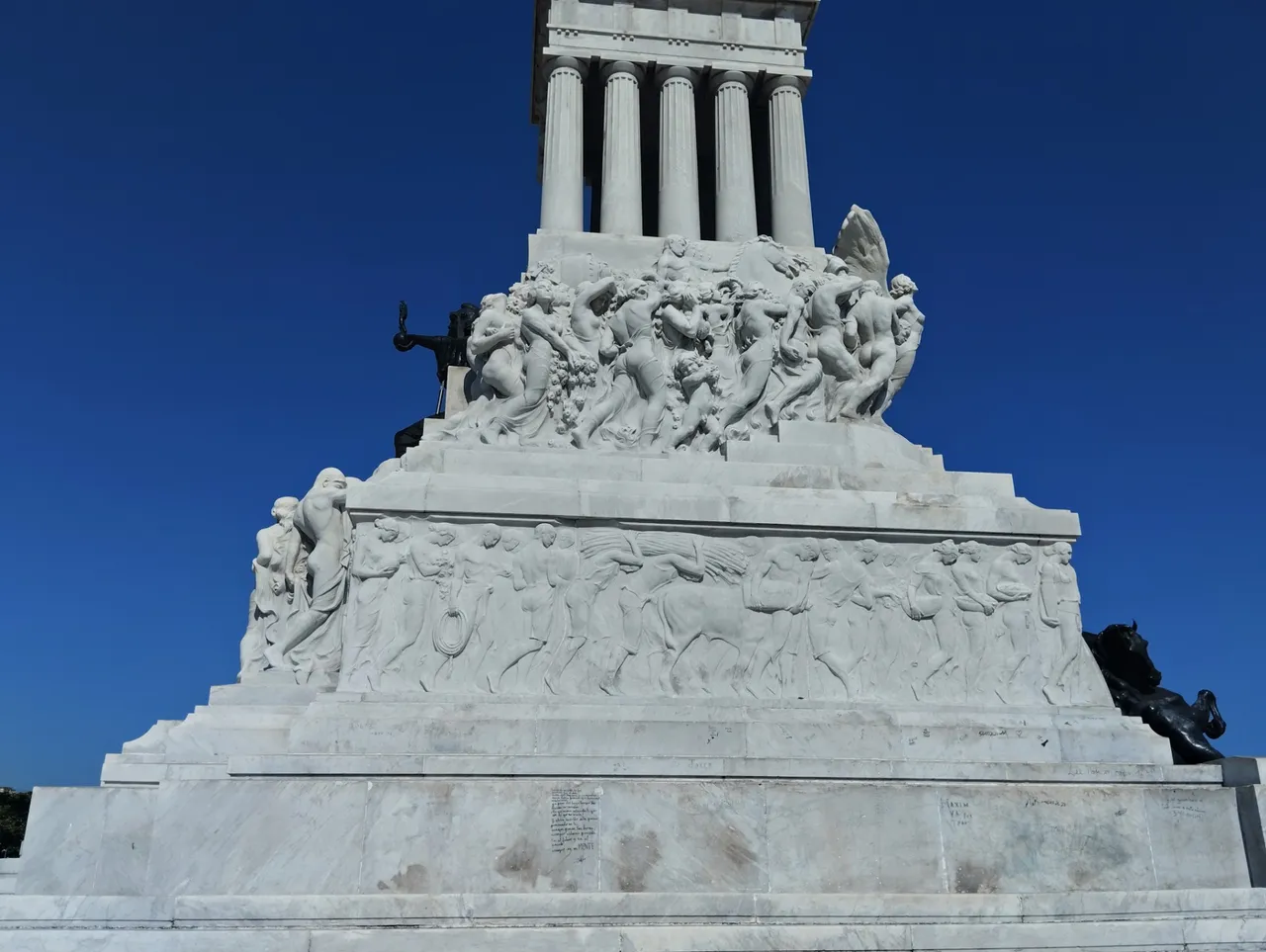
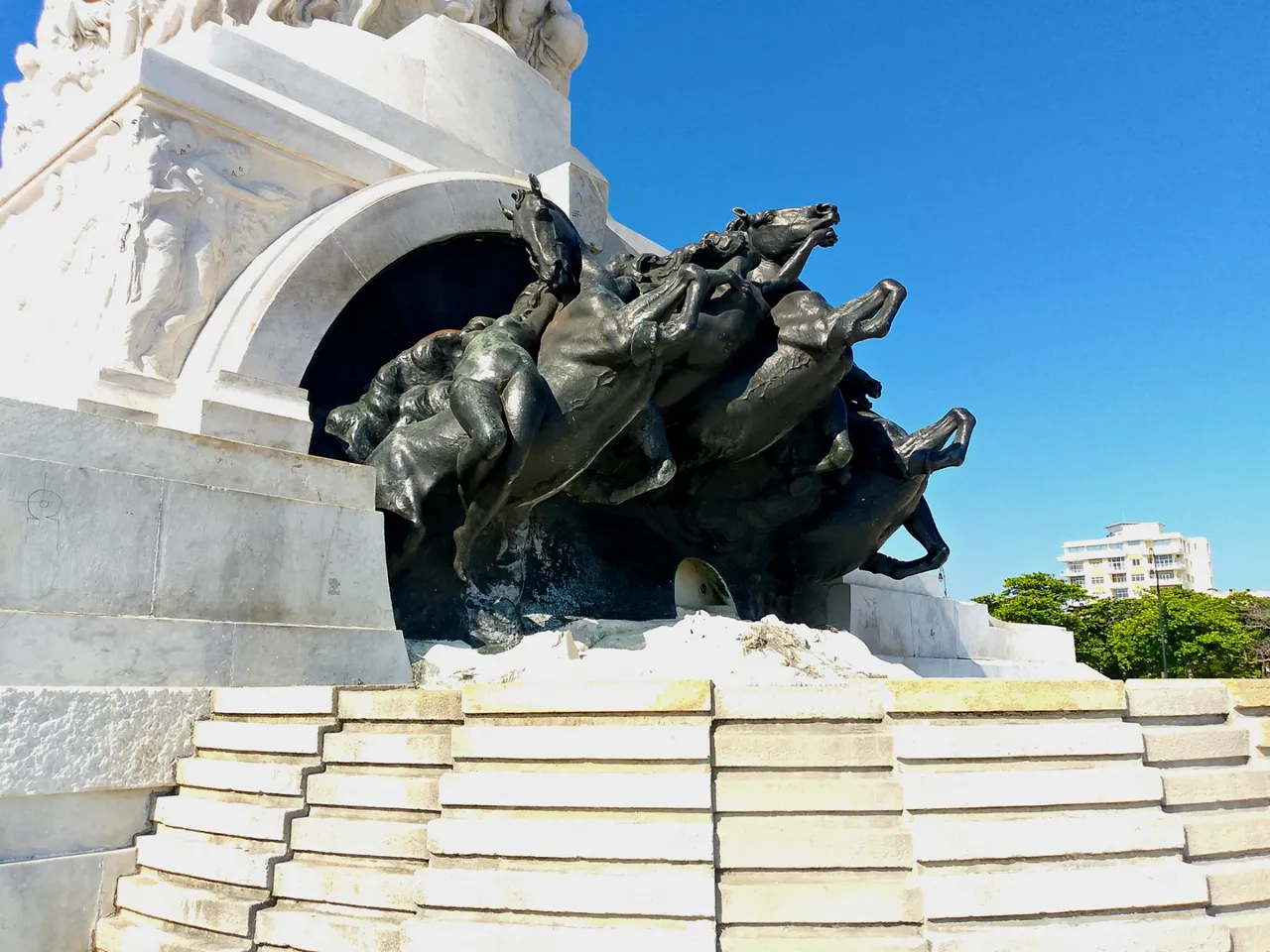
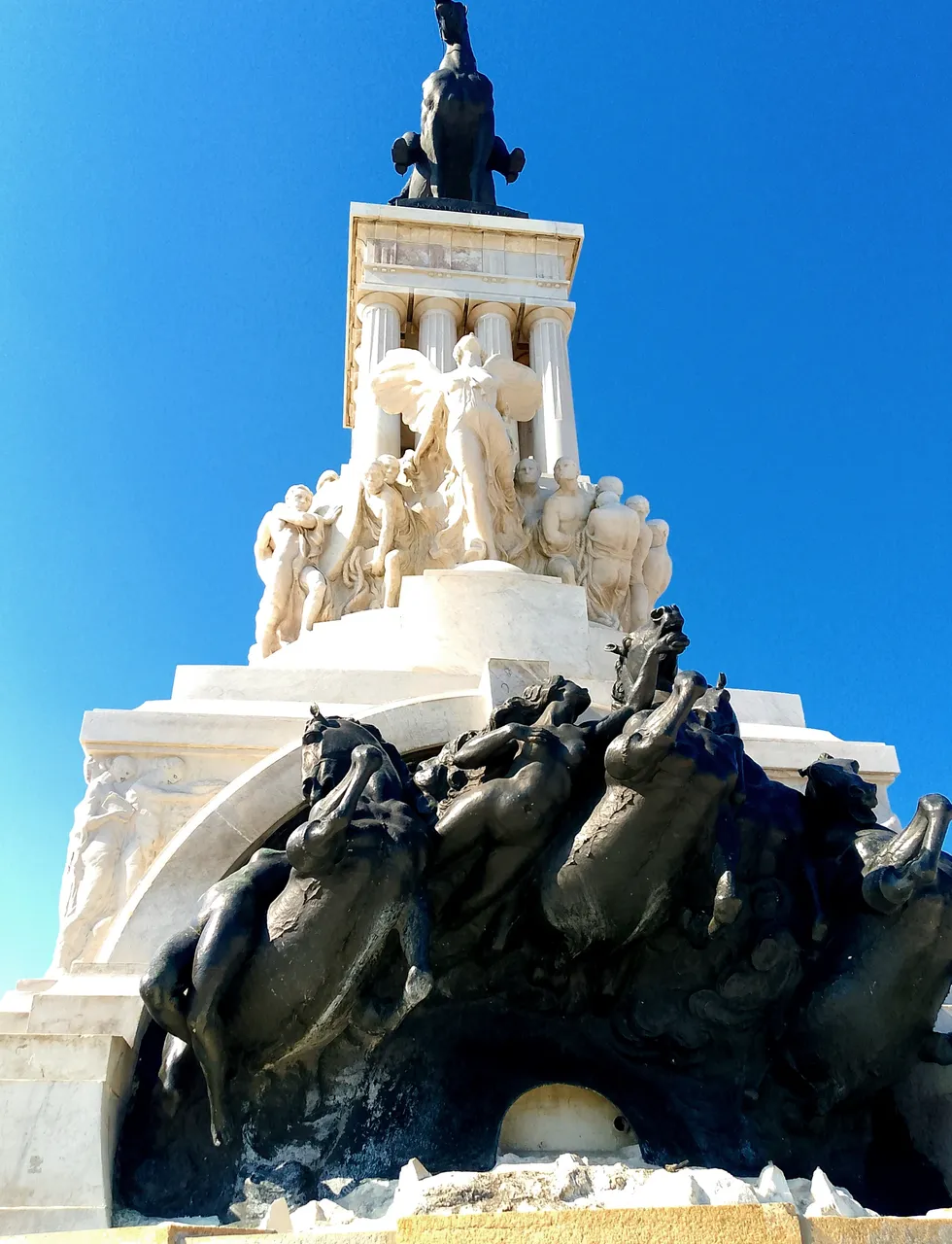
Above them is the sculpture of a winged image of a woman, a kind of victorious angel who guides the men in their struggle and dedication to independence. Symbolising the driving force of the mambises in battle.
I also liked the fact that every time I moved around and changed angles, I changed my view of the monument's background. So as soon as it is silhouetted against the clear, cloudless sky, as soon as it blends in with the green of the large promenade of the former presidential palace, or is guarded by the mighty ambience of the Morro Cabaña complex.
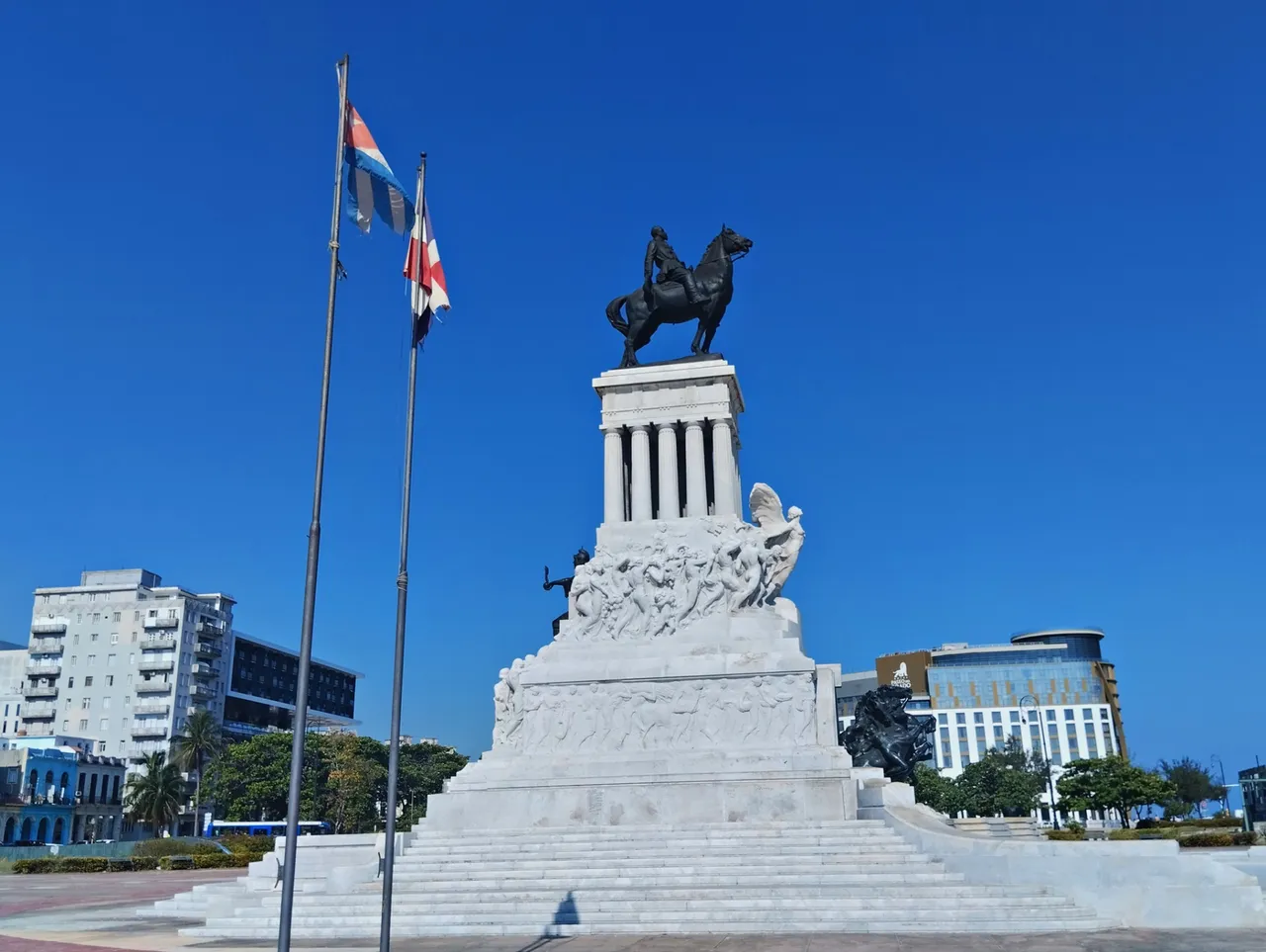
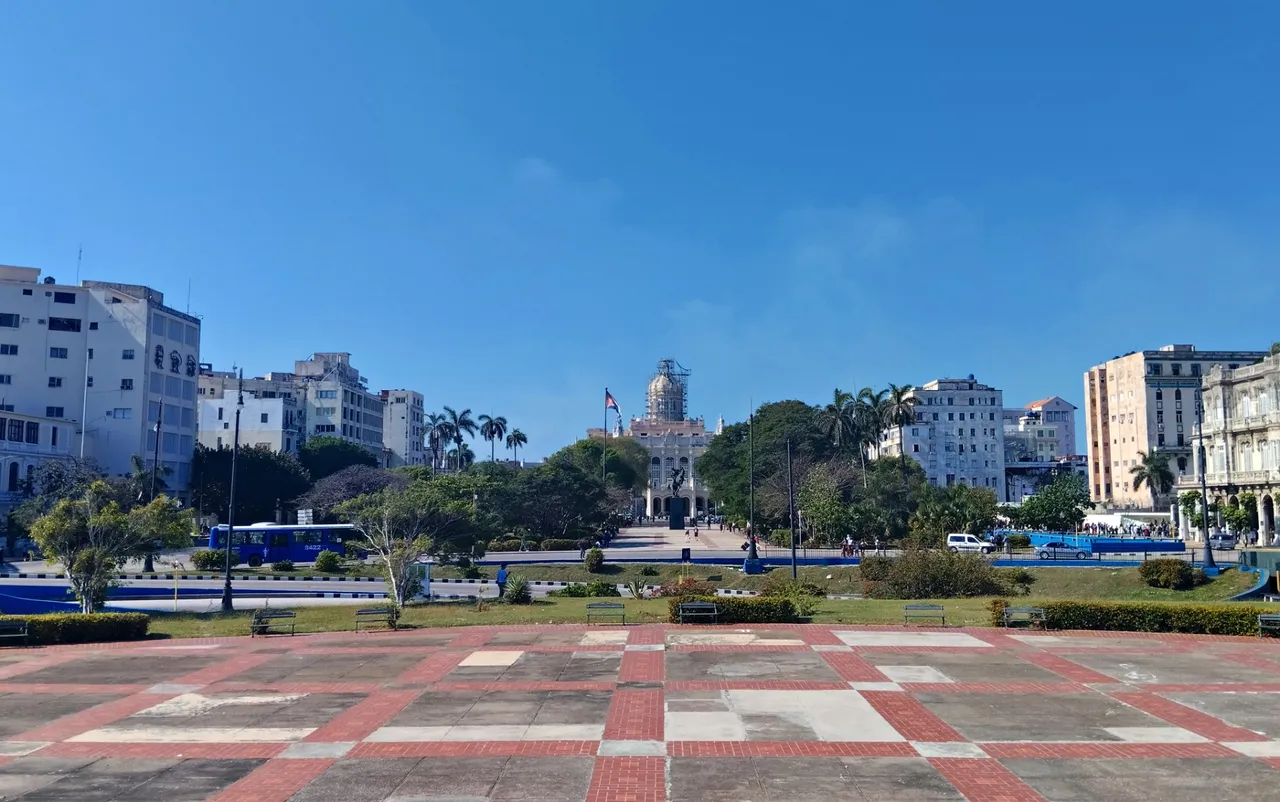
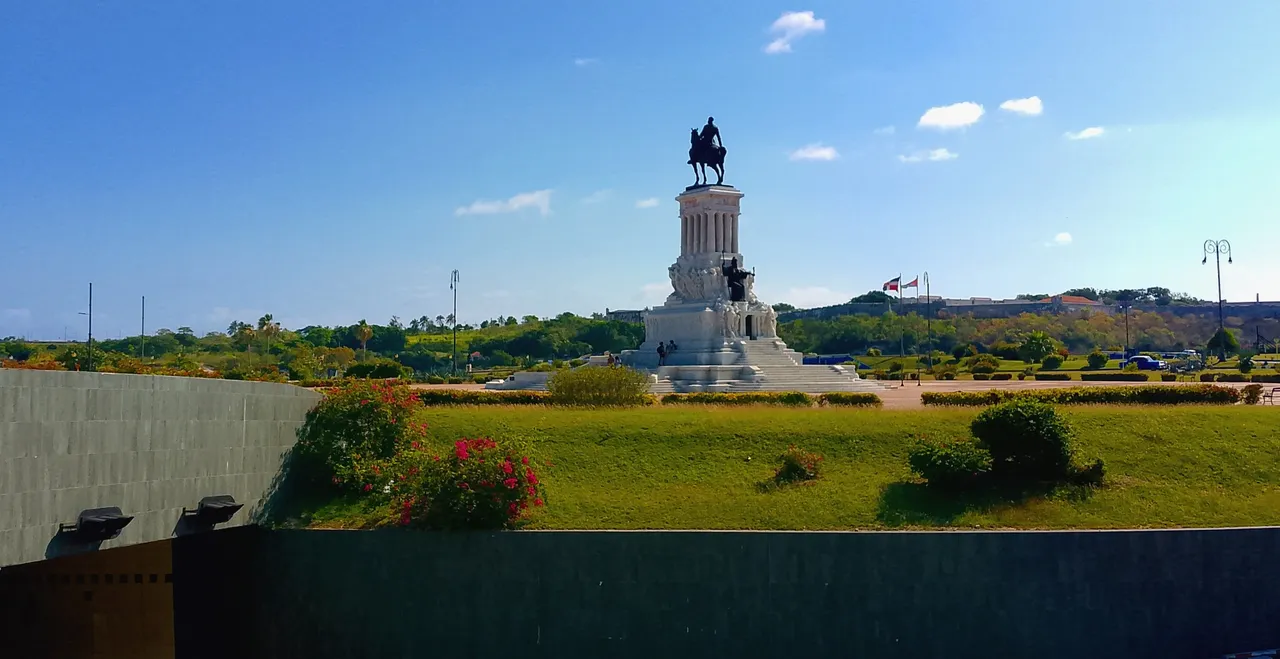
If I had to define the monument in one word, it would be ‘Imposing’. This is a monument that not only honours the memory of a great military strategist, but is an example of the fusion of architecture and urbanism in a harmonious whole.

I hope you have enjoyed this great monument, while learning about the history of my country.
Versión en Español
En el momento en que escribo esta publicación, viene a mi mente un pequeño fragmento de una canción cubana que habla de la manera en que se recuerda a los héroes: ‘A los héroes se los recuerda sin llanto...’ Y qué mejor forma de mantener viva su memoria que erigiendo un monumento en su honor, una escultura que nos recuerde la grandeza de sus actos y el valor inmenso de sus acciones.
En mi publicación de hoy voy a escribir sobre el Monumento a Máximo Gómez Báez, que se encuentra en La Habana, junto a la Avenida del Puerto, frente al Malecón. Es un amplio conjunto escultórico que rinde tributo a uno de los más grandes jefes militares de las guerras por la independencia de Cuba, un estratega brillante, y una figura destacada en las dos Guerras por la independencia de Cuba del coloniaje español.
La pieza central del monumento es la estatua ecuestre de bronce donde el General aparece sobre su caballo, como quien esta aun en pie de guerra listo para salir al galope con la primera señal de la corneta anunciando la tan temida carga al machete. La expresión en su rostro transmite determinación y liderazgo, recordándonos la valentía con la que condujo a las tropas cubanas.
El frente de la estatua esta de cara al mar, una referencia a su origen extranjero ya que el General Máximo Gómez era de nacionalidad dominicana. Sin embargo, Cuba fue su hogar, fue un personaje muy querido y admirado. A Cuba le dedicó sus mejores años, formó a su familia, y murió en suelo cubano, al final de su vida fue despedido con profundo respeto y admiración por el pueblo cubano. En Cuba descansan sus restos mortales, la tierra que defendió y amó.
El monumento se encuentra sobre una gran base escalonada que incluye rampas y una fuente que actualmente está en desuso, está formado por tres niveles ascendentes, decoradas con hermosos altos y bajo relieves que cuentan pasajes históricos de nuestras luchas.
Pero a mí lo más impresionante fue la cara principal del conjunto, donde hay grupo de caballos fundidos en bronce que parecen salir desde un nicho en la pared, atropellando a todo galope, transmitiendo energía y sensación de movimiento. En ese torbellino de caballos desbocados también se pueden ver algunos cuerpos desnudos de mujeres en lo que me parece es una alegoría a la libertad por la que el Generalísimo ofreció sus mejores años y conocimientos a las tropas insurrectas y a la causa cubana.
Sobre ellos está la escultura de una imagen de mujer alada, una especie de ángel victorioso que guía a los hombres en su lucha y entrega por la independencia. Simbolizando la fuerza impulsora de los mambises en la batalla.
También me gustó el hecho de que cada vez que me movía alrededor y cambiaba de ángulo, cambiaba la vista al fondo del monumento. Así tan pronto se recorta contra el cielo limpio y despejado, como se mezcla con el verde del gran porque paseo del antiguo palacio presidencial, o es custodiado por el poderoso ambiente del complejo Morro Cabaña.
Si tuviera que definir el monumento en una sola palabra, esa seria "Imponente". Este es un monumento que no solo honra la memoria de un gran estratega militar, sino ue es un ejemplo de la fusión entre arquitectura y urbanismo en un todo armonioso.
Espero que hayan disfrutado de este grandioso monumento, a la vez que aprenden sobre la historia de mi país.
